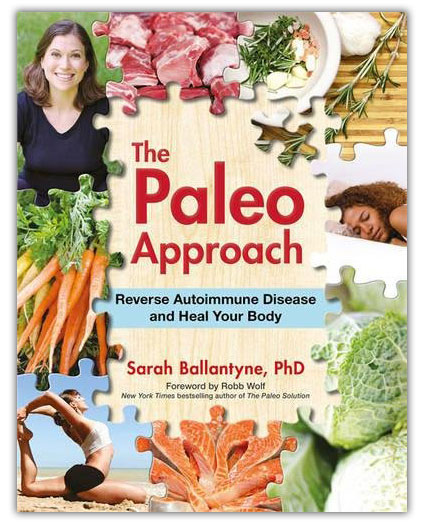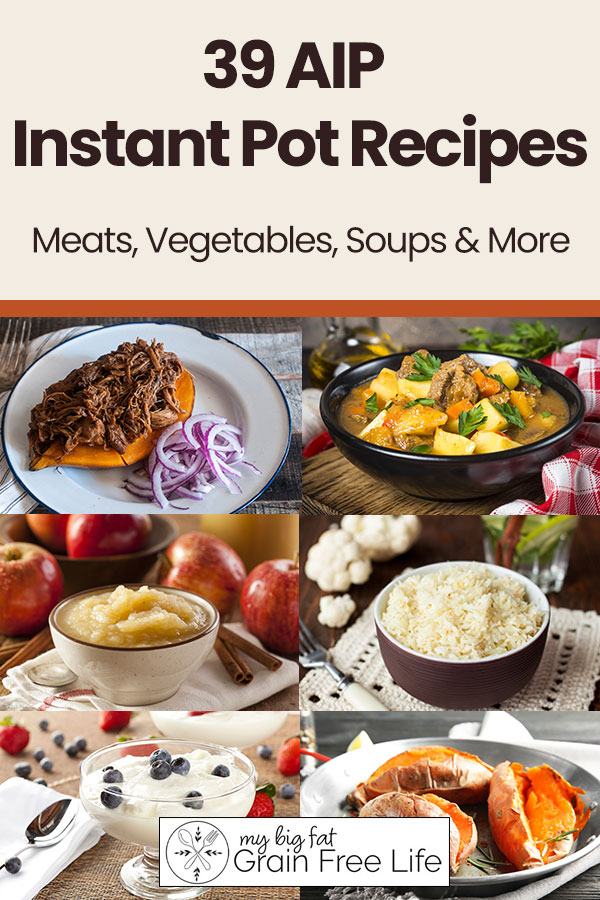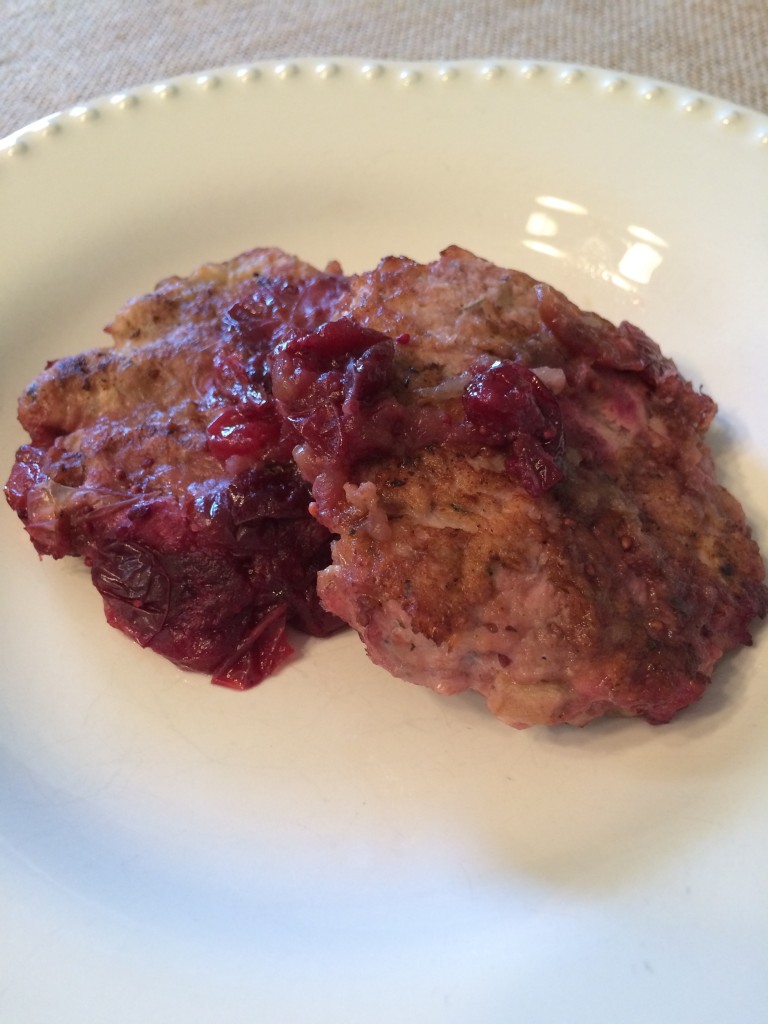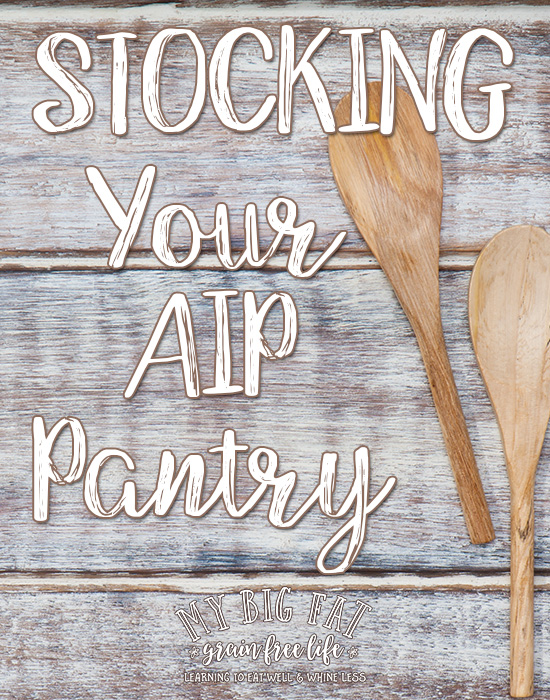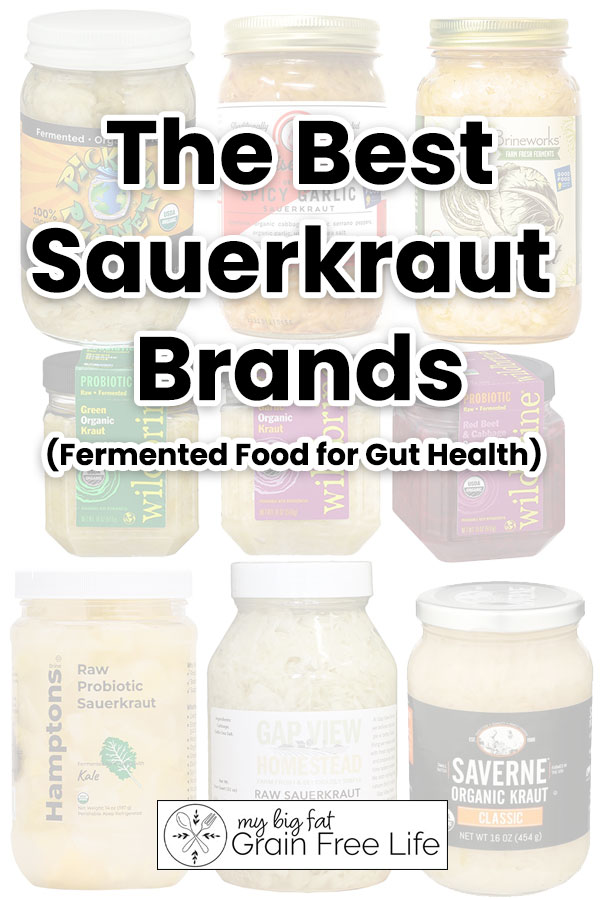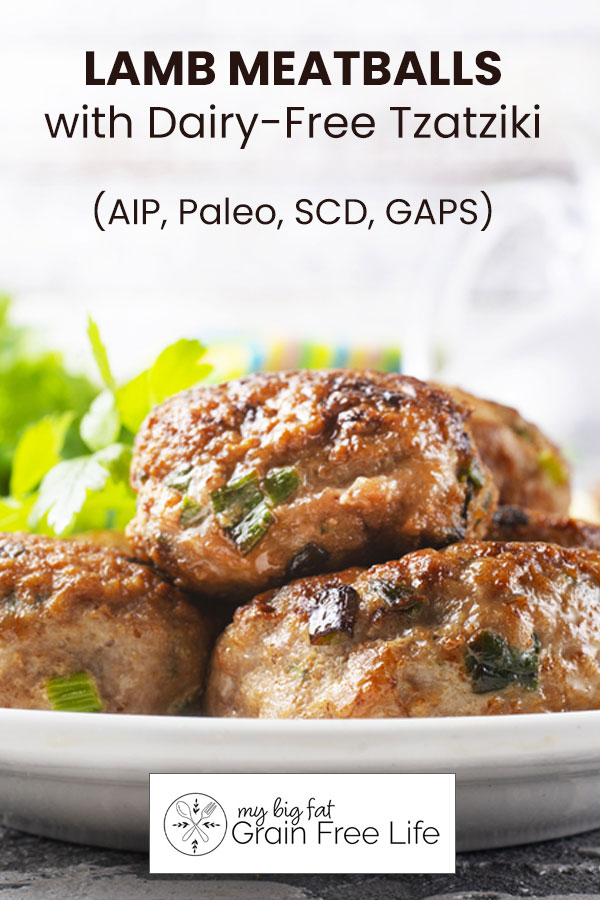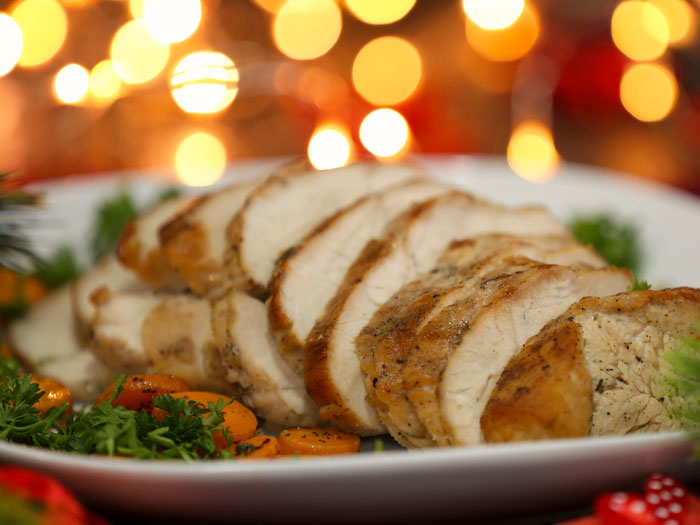AIP (Autoimmune Protocol) Quick Start Guide for Beginners
This post may contain affiliate links. If you make purchase after clicking a link, I may receive a commission at no extra cost to you.
Last Updated on April 1, 2023
An Autoimmune Protocol (AIP) diet plan is similar to the paleo diet, but is more strict. AIP is an elimination diet that involves eliminating certain foods that may cause inflammation and reintroducing them gradually once symptoms improve. If you are looking for autoimmune diet food lists and wondering how to get started, keep reading!
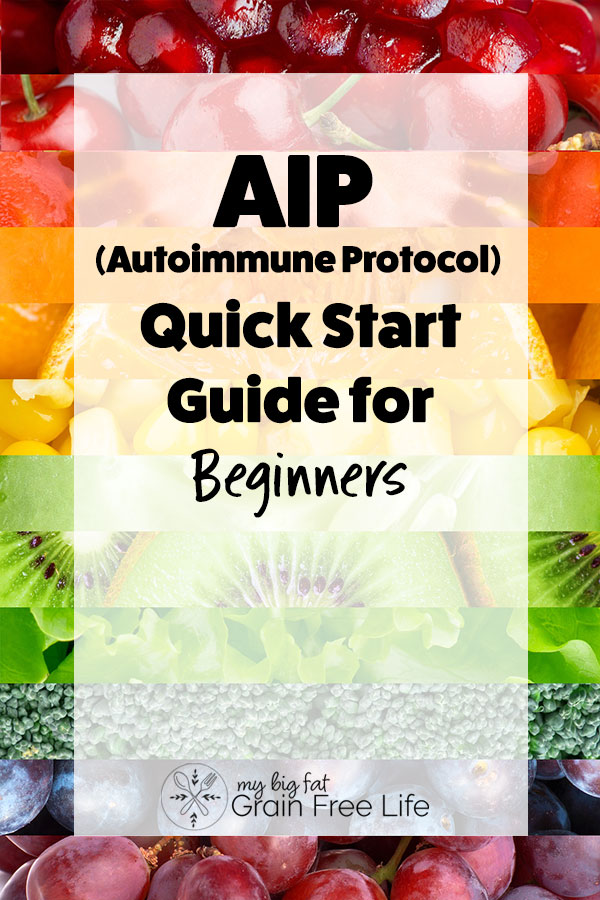
AIP (Autoimmune Protocol) Diet
The AIP diet, also know as the Autoimmune Protocol or sometimes referred to as Autoimmune Paleo is very similar to a paleo diet. The AIP focuses on eliminating foods for a certain period of time that are known to cause inflammation.
>> You can download our AIP Food Charts for free at the bottom of this post!
On an AIP diet you will focuse on eating nutrient-dense foods. The time you spend in the elimination phase is dependent upon the severity of your symptoms. Eventually you will start reintroducing foods one at a time.
You can learn about the elimination phase and how to reintroduce foods the correct way below.
What is the Autoimmune Protocol Diet?
The Autoimmune Protocol Diet is a whole foods diet that focuses on high-quality organic meats, healthy oils and fats, vegetables, and low-sugar fresh fruits. It eliminates grains, dairy, eggs, legume, nuts, seeds, nightshade vegetables, refined sugar, alcohol, and coffee.
We’ll dive in to what you can and cannot eat on an AIP diet below.
Reasons to Start an AIP Diet
If you suffer from an autoimmune disease such as lupus, inflammatory bowel disease (IBD), irritable bowel syndrome, ulcerative colitis, celiac disease, rheumatoid arthritis, psoriasis, Hashimoto’s thyroiditis or a host of other disorders, you may benefit from an AIP diet.
An autoimmune diet can help improve gut health and may reduce symptoms of autoimmune diseases, such as fatigue and gut or joint pain. It also helps reduce inflammation, which is the cause of most symptoms.
The focus of an AIP journey is to heal your gut and improve your quality of life with specific foods so you can enjoy life again.
Be sure to checkout this great list of AIP Snacks to help you make it through your new way of eating.
Heal a Leaky Gut
A leaky gut indicates that your gut lining is not working optimally and particles can break through and enter your system and cause damage to your body.
This can cause all sorts of gastrointenstial and bowel issues, and if left untreated can result in some serious health conditions.
For people with autoimmune disorders, and autoimmune response can manifest in different ways, such as psoriasis, joint pain, bloating, brain fog, digestion issues, and more.
Reduce Inflammation
Excessive inflammation is the root cause of many autoimmune conditions. By eliminating foods that are known to be inflammatory, you can experience some relief of debilitating symptoms. By slowly reintroducing foods in the reintroduction phase, you can learn what foods are triggers for your specific condition(s) and avoid them.
Eating to Control Autoimmune Disease
When you have autoimmune disease, it’s important to eat foods that don’t cause flare-ups and nourish your body with healing foods.
Once you have been on an anti inflammatory diet for a period of time, you will want to continue to pursue the foods that make you feel good and avoid the ones that cause you problems.
This may mean that you are on a modified AIP diet for many years, eating the foods that are good for you that you reintroduce without issues and not eating the ones that cause you pain or symptoms.
How Diet Can Help Autoimmune Conditions
Since autoimmune disorders are primarily due to an inflammatory response, it’s important to change your mindset about what you eat. This often involves making significant dietary changes. When you avoid eating foods that cause your body more inflammation, it can help your symptoms.
For instance, I have had psoriasis for over 30 years. I have managed to put it into 100% remission with diet alone. My diet changes have resulted in significant improvements in my overall health and reduction in autoimmune symptoms.
One of the books I really gleaned a lot of helpful information from when I started the AIP diet was The Paleo Approach: Reverse Autoimmune Disease and Heal Your Body by Dr. Sarah Ballantyne. I highly recommend this book!
The Elimination Phase
During the elimination phase of the aip diet it is super important to not cheat. You need to have superior self-control.
You will eliminate from your diet the following foods:
- grains (all grains, even pseudo grains: rice, barley, oats, quinoa, wheat, etc.)
- gluten
- eggs
- beans and legumes (green beans, black beans, white beans, navy beans, kidney beans, garbanzo beans, etc.)
- nuts
- seeds
- spices derived from seeds, such as cumin and coriander seeds
- nut and seed oils
- nightshade foods: tomatoes, potatoes (not sweet potatoes), eggplant, peppers, cayenne pepper, paprika, tomatillos, ahsgawanda, goji berries
- dairy products
- refined sugar
- some thickeners like xanthan gum and cornstarch
- alcohol
- coffee (coffee is acidic, in addition to being a seed)
- chocolate
- vegetable and seed oils (see below for what to use instead)
- all processed food, fast food, and food additives such as MSG, gums, etc.
You Might Also Enjoy Reading: Learn more: What are Seed Oils? Are They Really Bad for Your Health?
Learn about Russet Potato Vs Sweet Potato to learn why they are different and what makes sweet potatoes allowed on the AIP diet.
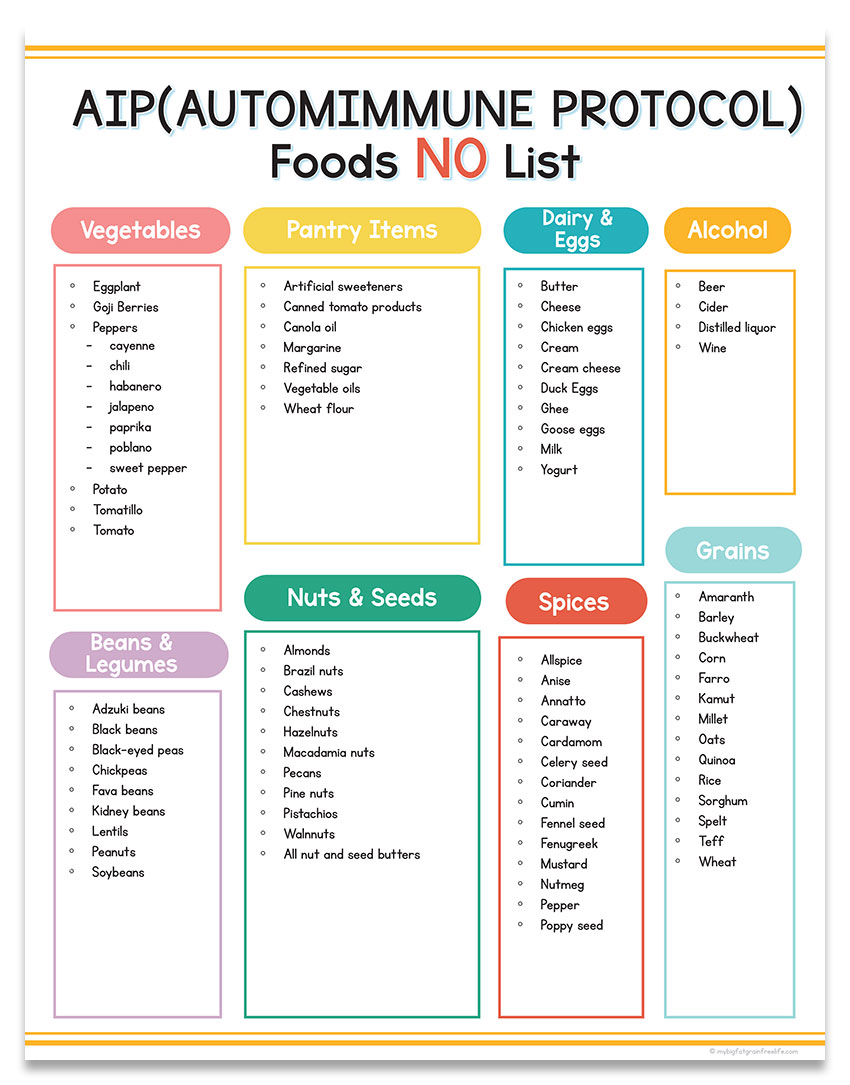
The Reintroduction Phase
You don’t want to start reintroducing eliminated foods too soon, but you also don’t want to wait too long. If you reinroduce foods too early, you will not know if they cause you issues or not. If you wait too long, you may become sensitive to everything you eliminated.
You don’t want to do that, trust me (I did!).
Most suggest to wait atleast 6 weeks before trying to reintroduce anything that has been eliminated. At the very least, you should wait 30 days. If you are noticing a lot of improvmenet with your symptoms, you may want to give it 90 days and enjoy feeling better.
You will reintroduce one food at a time, and watch for symptoms for 2-4 days before attempting to reintroduce additional food. Keeping a food diary will be very beneficial for you during this time.
Symptoms to Watch For During Reintroduction of Foods
Some symptoms you may experience when reintroducing a food that you previously eliminated may include:
- sinus/allergy problems
- excess mucus
- skin rash
- headache
- brain fog
- sleep issues
- bowel changes
- stomach upset
- bloating/gas
- swelling
- joint pain
Step-by-step Reintroduction of Foods
If you have a flare-up of symptoms after reintroducing a food, do not continue eating it; you can try again later. It’s important to wait until all your symptoms from the fail to subside before you try reintroducing another food item.
While some symptoms may come on quickly after eating a reintroduced food, others may take a few days. My psoriasis flares would often take a week before manifesting, so I knew to wait at least a week before judging if that food would be okay for me to eat or not.
Basically, you have to get to know your body!
If you don’t notice any symptoms after 4-5 days, you can try ading it back to your diet again. But – you will only want to add in foods that are healthy and good for you.
Foods to Eat and Avoid
Here’s the list of foods you want to steer clear from on the AIP (Autoimmune Protocol), followed by the safe foods.
Foods to Avoid on the AIP (Autoimmune Protocol) Diet
- grains (all grains: rice, barley, oats, quinoa, wheat, etc.)
- gluten
- eggs
- legumes (green beans, black beans, white beans, kidney beans, garbanzo beans, etc.)
- nuts
- seeds
- spices derived from seeds
- nut and seed oils
- nightshades: tomatoes, potatoes (not sweet potatoes), eggplant, peppers, cayenne pepper, paprika, tomatillos, ahsgawanda, goji berries
- dairy products
- refined sugar
- alcohol
- coffee
- chocolate
- bean or pea sprouts
- vegetable oils (see below for what to use instead)
- all processed food, fast food, and food additives
Foods to Eat on the AIP (Autoimmune Protocol) Diet
Here’s a list of the foods that you can eat when you are on and autoimmune paleo diet. Be sure to incorporate as many AIP-compliant superfoods as you can for optimal results.
Vegetables
Vegetables are a staple in the AIP diet. You can eat all of them except nighshades, algae, and green beans.
Cruciferous vegetable are important to consume (e.g., broccoli, kale, cabbage, brussel sprouts) as well as leafy green vegetables like arugula, lettuce, spinach, root vegetables, such as carrots, and sweet potatoes, etc.
All types of squash are also AIP and add a healthy starch to your diet. Certain ones, like spaghetti squash and zuchinni make great AIP pasta substitutes. You can also explore these spaghetti squash recipes, although not all are AIP compliant.
Shoot for 8 servings of vegetables daily.
Mushrooms
Mushrooms are safe to eat on the AIP diet.
Fresh fruit
You should eat a variety of fruit, but aim for the low-sugar fruits and be sure to consume in moderation.
Tubers
You can enjoy tubers like sweet potatoes, taro, yams, artichokes, yuca, ñame (pronounced “nyah-may”), and malanga. You can also use arrowroot or tapioca flour in moderation.
Meat
It’s important to eat high-quality, minimally processed meat on the AIP diet. Meats should be grass-fed, wild, and pasture-raised as much as you are able. Wild games, seafood, and poultry is good to eat. Organ meats are a super-food and encouraged on the AIP diet.
There are so many benefits of chicken hearts and other organ meats like chicken gizzard. My recipe for chicken liver pate may change your mind about eating offal.
Fatty Fish
Eating wild-caught fish that’s high in omega-3 fatty acids is a great addition to the AIP diet. Choose healthy fish like salmon, mackerel (lots of health benefits of mackerel), and sardines, for example. Avoid farmed fish like Tilapia and Swai fish.
Bone Broth
AIP Bone broth has so many amazing benefits! Enjoy bone broth daily, and it’s best if you make it yourself.
Healthy Oils
You will need to focus on the good fats from these healthy cooking oils only: olive oil, tallow, high-quality lard, avocado oil or coconut oil. If choosing coconut oil, opt for cold-pressed coconut oil as it has a higher nutritional value.
In addition, all types of avocados provide great healthy fats. There are also great health benfits of kalamata olives and other types of olives.
Fermented, Probiotic-rich Foods
You can enjoy all nondairy-based fermented foods. This includes beverages such as kombucha, water kefir, coconut kefir, and foods such as fermented garlic, coconut yogurt, fermented sauerkraut and pickles.
Learn how to make your own sauerkraut recipes!
Be sure to watch labels closely as you want pure, natural ingredients without any additives.
Herbs and Spices
Fresh herbs are enouraged and you can use spices as long as they are not derived from nightshades or seeds. Some great AIP-legal herbs are oregano, thyme, basil, rosemary, etc.
The type of salt you use is important, so opt for unrefined sea salt.
Paprika and Cayenne should be avoided as they are nightshades. During the elimination phase black pepper is to be avoided initially.
Vinegars
You can consume some types of vinegar as long as there are no additives or added sugar. Some choices are apple cider vinegar (ACV), balsamic, and red wine vinegar.
Check out our post: Apple Cider Vinegar vs White Vinegar (white vinegar is NOT allowed on the AIP diet).
Natural Sweeteners
The safe natural sweeteners for you to consume are maple syrup, raw honey, and coconut sugar. Of course, you will want to do so in moderation. The AIP diet recommends no more than 1 tsp daily of any sweetener.
Check out our post: 20 Incredible Health Benefits of Wildflower Honey
Beverages
Different typs of tea are allowed on an AIP diet. Some teas help fight inflammation. Such teas are green and black tea, in addition to kombucha, water kefir, and coconut kefir. There are many health benefits of fruit infused water, so that’s a great and healthy beverage option.
Limit fruit juices, such as apple juice, due to sugar content.
AIP Snacks
There are some AIP-complant snacks you can make or purchase to help you when you are feeling snacky. If you’re wondering about plantain chips vs potato chips, you will be glad to know that they are a worthy substiture for the standard potato chip, plus they are AIP approved!
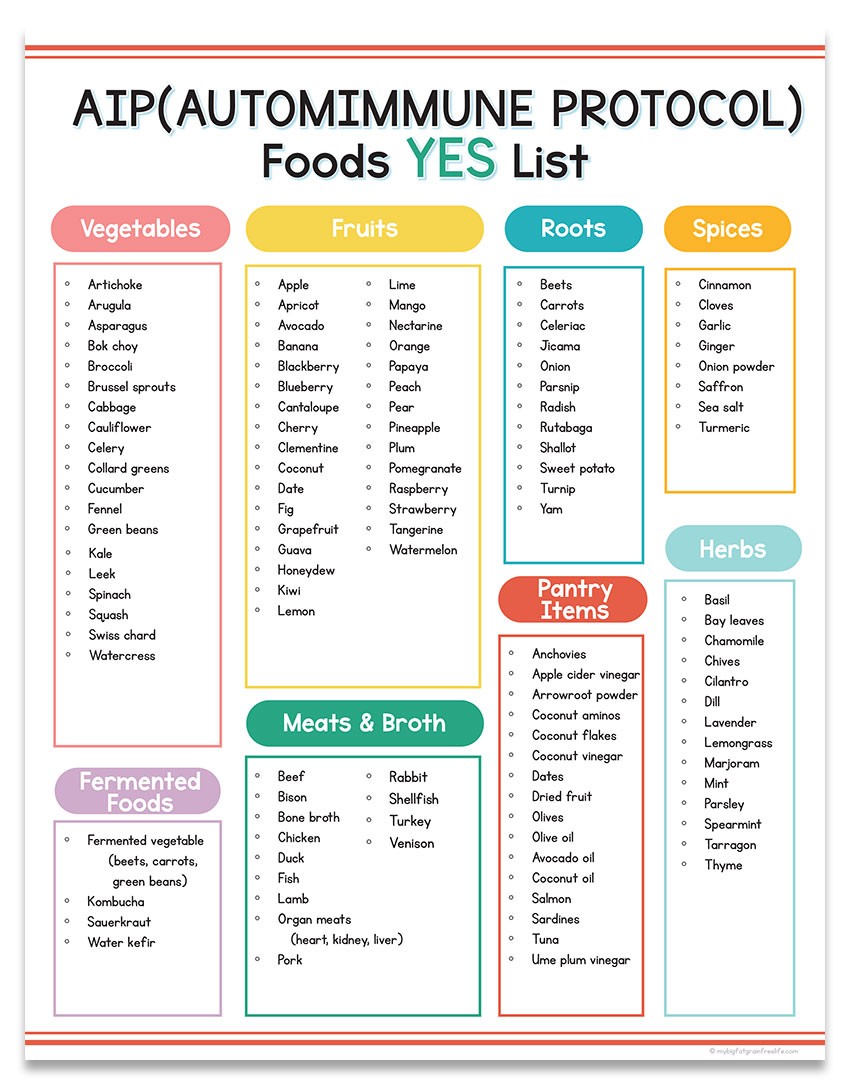
Books to Help You Get Started with AIP
- Healing Mindset
- The Healing Kitchen
- The Paleo Healing Cookbook
- The Paleo Approach Cookbook
- The Autoimmune Protocol Made Simple Cookbook
I have enjoyed a lot of the recipes that Amanda at Curious Coconut has; I highy recommend checking out her site. They are not all AIP, but they will be listed as such. The Paleo Mom also has a lot of helpful information regarding AIP.
Does the AIP diet work?
The AIP Autoimmune Protocol is not a magic formula that will heal all the things, but it can help you tremendously if you suffer from autoimmune disorders by decreasing the inflammation in your body. You can expect a positive change in your overall health when you focus on eating whole foods with essential nutrients and avoiding junk food.
Positive Effects of a Nutrient-Dense Diet
It’s safe to assume you will experience all sorts of positive effects when you focus on eating healthy foods for your body. With the AIP diet you may experience weight loss, decrease in chronic pain, improvement in the health of your digestive tract, healing of leaky gut syndrome, and a reduction of systemic inflammation.
Making other lifestyle changes along with your diet such as getting regular exercise, stayng hydrated, and getting adequate sleep can help reduce chronic inflammation. A good probiotic can also be super beneficial for your gut microbiome.
You might even put your autoimmune disorder into remission like I did!

